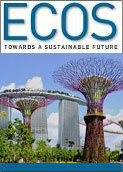
|
Published: 4 March 2013
Mapping the living story of an ancient land
Lake Gregory is a semi-permanent waterbody in the desert of north-western Australia. The lake is known by the local Walmajarri people as ‘Paruku’. Not only is it of national significance as a waterbird refuge, but it has also offered up evidence of past climates and human habitation.
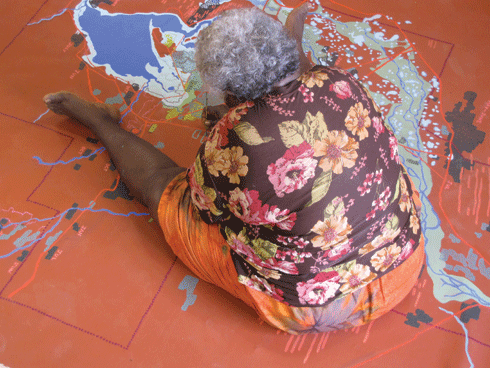
|
|
Walmajarri elder, Veronica Lulu, painting a ‘fire map’ of the Paruku area. Credit:
Kim Mahood
|
A new book, Desert Lake , uses science, art and Indigenous knowledge to reveal a human story stretching back fifty thousand years. One of the team behind the book, Kim Mahood, discussed her experiences and knowledge of the area with ECOS.
What and where is Paruku?
Paruku is a terminal lake system in the southeast Kimberley, at the western edge of the Tanami Desert and the northern edge of the Great Sandy Desert. It is a linked group of lakes created by the flood-out of Sturt Creek, which rises in the Northern Territory just about where the Victoria River ends.
The lake system was once part of an ancient or ‘palaeo’ river that flowed into the Indian Ocean. As the continent got increasingly drier, the dune fields blocked the palaeo-river and created an inland sea, of which Paruku is a remnant. The explorer Augustus Gregory named the lake Gregory Salt Sea in 1856, but since it periodically dried up, it was downgraded to Lake Gregory, which is what it is now called on topographical maps.
What is its significance, both to the Walmajarri people and to ‘whitefella’ scientists?
Paruku is home to several eastern Walmajarri families, who identify with specific locations around the lake. ‘Home’ means that their ancestors lived and died there and have become entities that are still present in and around the lake. The identity of the traditional owners is inseparable from the country itself. They are the country and the country is them. They are among the very fortunate Indigenous people who still live on their country, and for this reason they have a robust and sustaining sense of themselves.
The scientific values of the lake system are manifold. It is a unique arid-zone wetland that combines a desert environment with a very large semi-permanent water body. It’s a major bird refuge in dry times, and in big wet seasons it is home to astonishing numbers of birds of all kinds.
Paruku has interesting hydrological qualities, since the largest of the lakes becomes salty as it dries back, while the shallow western lakes are fresh. A very rare salt-tolerant acacia grows close to the lake: the only other known colonies are also around lake systems in the Tanami Desert.
Probably Paruku’s most significant scientific value is in what it has to tell about ancient climate patterns – especially the behaviour of the monsoon in northern Australia – and about the antiquity of human presence around its shores. Jim Bowler – an eminent geologist recognised as one of our foremost experts in Australia’s prehistory – has likened Paruku to a northern, active version of the Lake Mungo system in south-eastern Australia, where he discovered the burial sites that first established the antiquity of human presence in Australia.
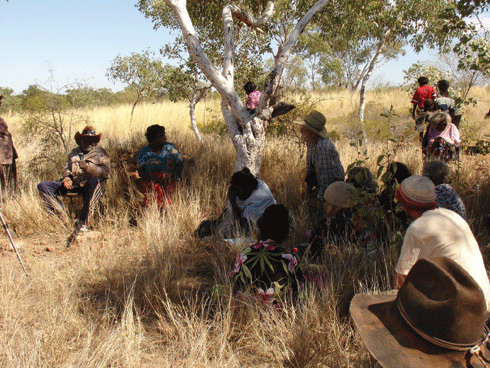
|
|
Traditional owners talking with Jim Bowler at the site of the Old Sturt Creek homestead: the Paruku system is fed by Sturt Creek. Credit:
Kim Mahood
|
In the Desert Lake book, science is combined with stories and art from the Walmajarri about Paruku. Do you feel that Indigenous art and belief systems are compatible with a scientific approach to ‘mapping’ this country?
I often say that while I don’t ‘believe’ in the Walmajarri cosmology I witness its reality around me all the time. I think the two systems together provide an incredibly rich and dynamic way of interpreting the country.
Scientific understanding provides us with evidence – of ancient human occupation and climatic conditions and the impact of time and change, as well as ways of systematically gathering and interpreting information.
I love witnessing the excitement of the true scientist reading the country through his or her particular prism of knowledge – having Jim Bowler read the climatic events of millennia in the bands of rock and clay of an eroded cliff face, and then having Traditional Owner Hanson Pye interpret that same cliff face through the lens of the Dreaming.
Indigenous belief systems animate country, enlivening it with the evidence of ancestral activity, infusing it with drama and danger, provoking the awe with which one ought to approach country. As someone who can no longer spend time in a place without feeling those other forces and energies moving through it, I don’t experience any disjunction between the two knowledge systems.
What is the happiest memory you have of working with Walmajarri women on their art and mapping projects?
There have been so many great moments (and plenty of tough ones), but for me the best times are always when we are out on country together, sharing knowledge, fishing and camping and telling stories, when the pressures of community life drop away and it’s about being at home in the country.
It’s an incremental process – there was an afternoon a few years into the mapping project when I realised that I had been given a great deal of information without asking a single question, and I knew that somewhere along the way I’d learned how to listen.
Another time we were driving through a particular piece of country where the women had told me the names of the trees and plants many times, recounted events from their childhoods, pointed out animal and reptile tracks, and it suddenly came into focus in all its astonishing variety and aliveness in a way I’d never seen it before. It was as if I’d shifted from seeing it to recognising it.
The great thing about the mapping work is that it will never be finished, because there’s no end to what can be learned and recorded about the country.
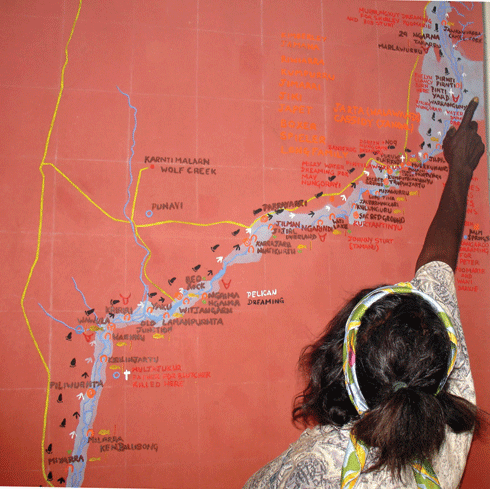
|
|
Evelyn Clancy with the Sturt Creek map Credit:
Kim Mahood
|
What hopes do you have for future of Paruku and the Walmajarri culture?
The Walmajarri have been adapting to change since they took up residence on the edge of the lake fifty thousand years ago, although the speed and scale of change has certainly escalated in the past hundred and fifty years.
But they are still on their country – they’ve seen the pastoral frontier come and go, they’ve weathered the Christian missionaries, and they are doing a pretty good job of weathering the contemporary missionaries, mercenaries and misfits.
Although they have a lake at the centre of their world, they are still desert people, the world’s most resourceful hunters and gatherers, and while the resources at their disposal may be changing, their capacity to gather and exploit them is undiminished.
They and their country attract the interest and support of influential white people, and they have a fantastic eco-tourism resource if they choose to develop it. I have a lot of faith in their capacity to maintain something that works for them, though the shape it takes may be difficult for most white people to recognise or appreciate.
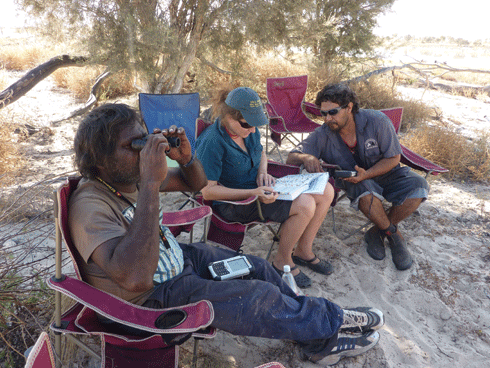
|
|
Hanson Pye, Rebecca Dobbs and Jamie Brown recording waterbirds on the lake, 2010. Credit:
Kim Mahood
|


